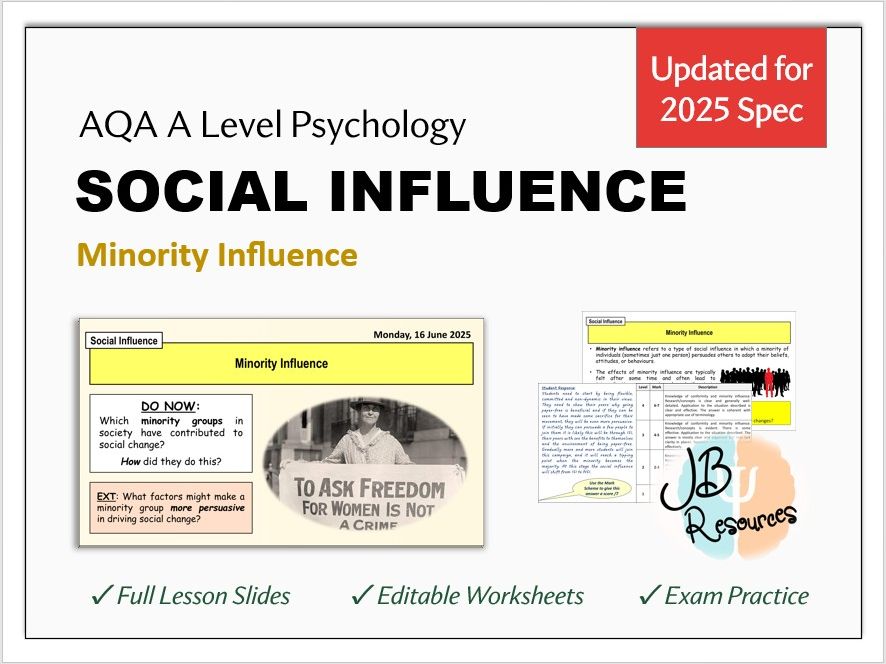

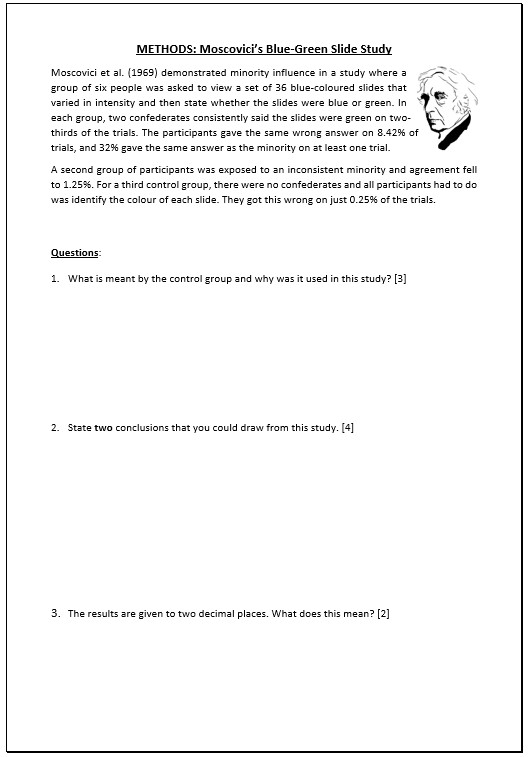
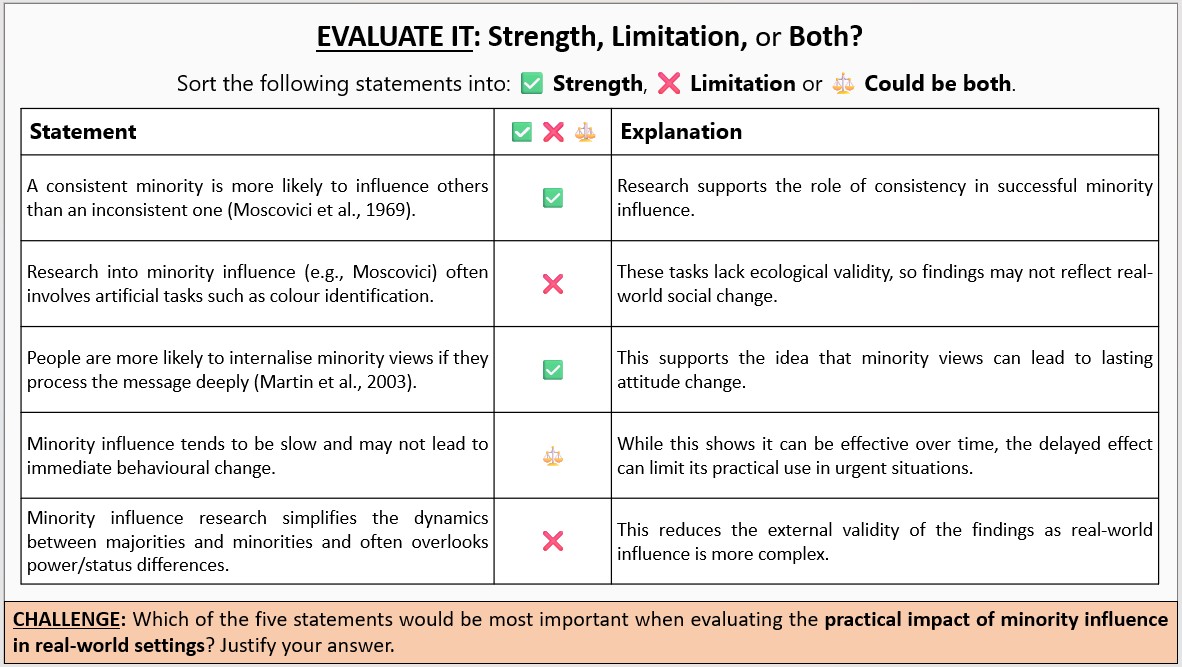
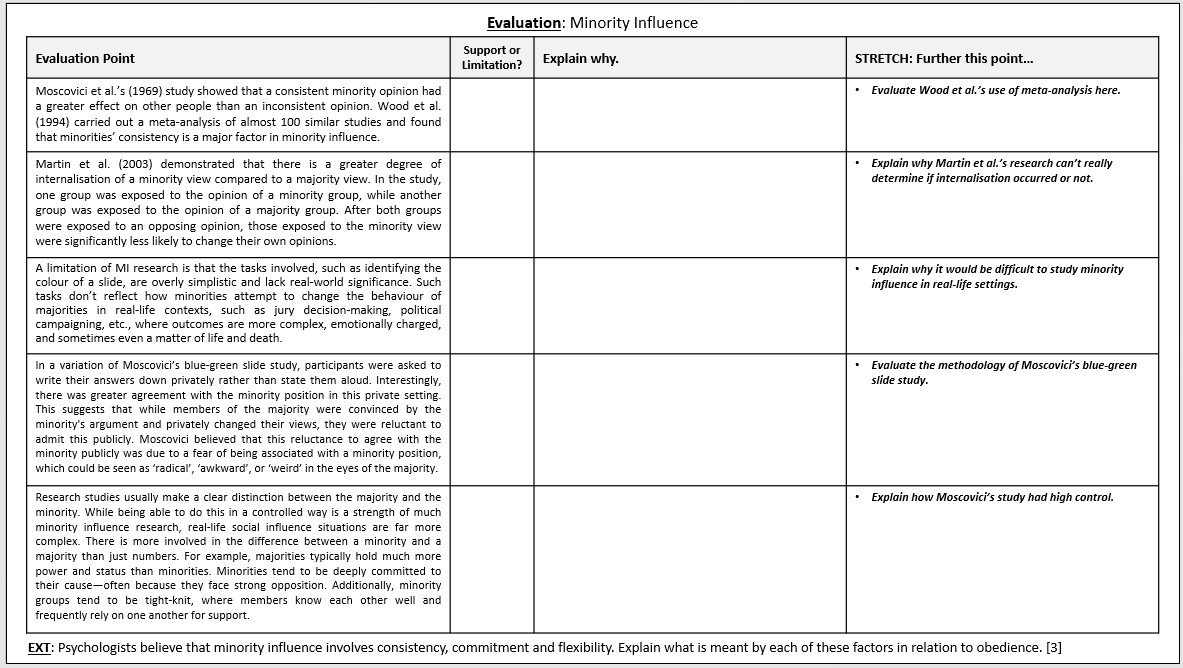
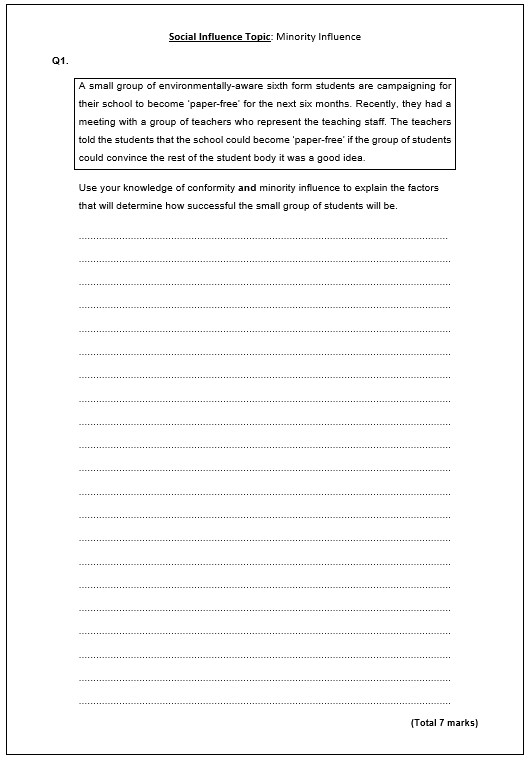
Updated for AQA 2025 Spec – Teaching from SEPTEMBER 2025 onwards
This resource is designed for teaching Minority Influence under the AQA A-Level Psychology (2025 Specification). It has been fully updated to meet the revised requirements, which expect students to describe the processes of consistency, commitment and flexibility in minority influence, understand how these lead to internalisation and social change, and evaluate supporting and contradictory research such as Moscovici’s blue-green slide study.
If you’re looking for the 2019 specification version of this topic, please visit my shop.
This fully editable lesson explores how individuals or small groups can influence the majority through key behavioural styles. Students are supported in developing strong AO1, AO2 and AO3 skills through real-world examples (e.g. Martin Luther King Jr.), structured research summaries, discussion tasks, and critical evaluation activities.
What’s Included:
-
Fully Editable Lesson Slides – Covers all required content on the processes of minority influence (consistency, commitment, flexibility), how these lead to internalisation, and the snowball effect. Includes real-world case studies, definitions, exam-style questions, and visual summaries.
-
Think, Pair, Share Questions – Engaging prompts such as “Why does minority influence often lead to internalisation?” and “How might synchronic and diachronic consistency differ in practice?” help students apply key ideas and practise AO2 thinking.
-
Moscovici’s Blue-Green Slide Study Summary – Clear outline of the procedure, findings, and significance of the classic 1969 study. Includes follow-up questions and a suggested model answer to aid understanding of control groups, percentages, and experimental design.
-
Evaluation Worksheet – A printable resource where students identify whether AO3 points are strengths or limitations, and explain why. Ideal for group discussion, homework or exam prep.
-
Exam Practice Questions – Application-based 7-mark question about a student campaign for change. Includes a model Level 3 and Level 4 response with examiner commentary for peer marking or guided discussion.
-
Plenary Discussion Task – Students debate which factor is more important for minority influence: commitment or flexibility. This encourages critical thinking and cross-comparison of key ideas.
How This Resource Reflects the 2025 Specification Changes:
-
Fully aligned with AQA 2025 content under Social Influence: Minority Influence
-
Explores consistency, commitment and flexibility as key processes of minority influence and their role in social change
-
Covers internalisation and the snowball effect as required by the updated spec
-
Provides clear research evidence (e.g. Moscovici, Martin et al., Wood et al.) and evaluation of methodological and real-world limitations
-
Develops AO1, AO2 and AO3 through scenario tasks, model answers and retrieval questions
Get this resource as part of a bundle and save up to 20%
A bundle is a package of resources grouped together to teach a particular topic, or a series of lessons, in one place.
Something went wrong, please try again later.
This resource hasn't been reviewed yet
To ensure quality for our reviews, only customers who have purchased this resource can review it
to let us know if it violates our terms and conditions.
Our customer service team will review your report and will be in touch.